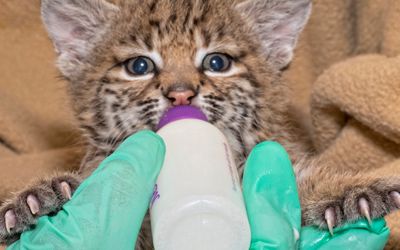Area Resources for Effective Animal Control Burlington Services
Wiki Article
Usual Challenges and Solutions in Urban Wildlife Removal Efforts
Urban settings present special difficulties for wildlife management professionals charged with eliminating or managing wild animals populations. These challenges often converge with ethical considerations, lawful structures, and the safety and security of both pets and humans. Public resistance and misunderstandings additionally complicate these initiatives, demanding cutting-edge, non-lethal services and durable neighborhood outreach. Recognizing the intricacies involved in metropolitan wildlife removal is crucial for establishing methods that stabilize human safety with wild animals well-being. What techniques have confirmed most reliable, and just how can areas be better engaged to support these campaigns? This discussion looks for to reveal the detailed balance needed for successful metropolitan wild animals monitoring.Ethical Wildlife Administration
Addressing the complexities of ethical wildlife administration needs a balance between human passions and the preservation of wild animals ecosystems. In urban settings, this equilibrium ends up being significantly difficult as human development encroaches on wild animals environments, causing constant human-animal communications. Moral wild animals monitoring in these atmospheres demands strategies that focus on gentle treatment of animals while reducing prospective problems.Among the core concepts in moral wild animals monitoring is the avoidance of harm. This includes using non-lethal methods for wild animals elimination, such as exclusion methods that avoid pets from entering human houses, or utilizing deterrents that lead them away from metropolitan areas. Wildlife specialists are tasked with employing approaches that minimize anxiety and injury to the pets, guaranteeing their welfare is thought about along with human safety and security.
In addition, ethical management calls for educated decision-making based upon clinical study and eco-friendly understanding. It is necessary to assess the environmental functions of city wildlife and how their elimination could affect regional biodiversity. Specialists have to additionally participate in public education, cultivating a more comprehensive recognition of coexistence approaches and emphasizing the relevance of maintaining natural habitats. Eventually, effective honest wild animals management includes cooperation between guardians, policymakers, and the general public to maintain urban ecological communities.
Browsing Legal Restrictions
Navigating the lawful landscape of metropolitan wildlife elimination offers a complicated layer to the already challenging task of ethical wild animals administration. These legislations vary dramatically across regions, requiring complete understanding and compliance from those included in wildlife management - wildlife rescue burlington.One major challenge is the consistent advancement of these regulations, frequently driven by environmental changes and societal attitudes in the direction of wildlife conservation. Because of this, experts have to continue to be informed about present legal requirements and forthcoming legal modifications. Non-compliance can lead to substantial penalties, lawful implications, and reputational damages.
In addition, collaboration with regional authorities can be crucial in browsing these constraints successfully. Building partnerships with wild animals companies and legal professionals can offer valuable understandings and guidance. This collaboration guarantees that elimination initiatives are not just lawful but also straighten with more comprehensive conservation objectives. Hence, understanding and sticking to lawful frameworks is not merely a step-by-step requirement yet an essential element of liable and lasting urban wild animals monitoring.

Safety in Elimination Practices
Guaranteeing safety and security in wild animals elimination practices is extremely important to securing both human and animal well-being. A key issue in wildlife removal is the capacity for injury or illness transmission to people, requiring the use of personal protective tools (PPE) such as goggles, handwear covers, and masks.
Safe removal practices also consist of the usage of humane catches created to stop injury. These catches have to be on a regular basis kept an eye on to make certain that animals are not left in distress. In addition, it is important to abide by guidelines that determine the ideal handling, transport, and launch of captured wild animals, making certain that the animals are gone back to ideal environments where they can prosper without posing further dangers to city settings.
In addition, education and training for those included in wildlife removal are necessary. This makes certain that all parties know the current security protocols and techniques, thereby reducing the possibility of crashes and promoting an unified conjunction in between metropolitan occupants and wild animals.
Innovative Deterrent Solutions
While security in wild animals removal is important, protecting against encounters with urban wild animals via innovative deterrent services Our site can dramatically reduce the demand for such interventions. Urban settings, with their abundance of food and sanctuary, often attract wild animals like squirrels, pigeons, and raccoons, leading to possible disputes. Advancements in technology and style have led the way for imaginative and reliable deterrent approaches that minimize wildlife presence without harm.One such service is using ultrasonic tools, which emit high-frequency audios inaudible to human beings however undesirable for different wild animals species, driving them away from specific areas. In addition, motion-activated sprinklers can hinder pets by shocking them with unexpected bursts of water, successfully preventing their return. These devices are specifically helpful in securing gardens and green rooms from foraging animals.

Furthermore, the combination of wise lighting systems that adjust their brightness and color can interfere with the nighttime activities of specific wild animals, reducing their convenience in city setups. Physical barriers, such as bird spikes and nettings, remain to offer as practical deterrents, stopping animals from nesting or roosting in unwanted locations. Stressing humane and eco-friendly techniques, these developments hold assurance for lasting metropolitan wildlife administration.
Community Education Campaigns
Understanding the importance of community education efforts is essential in addressing urban wild animals challenges properly. Such efforts play a substantial role in fostering conjunction between humans and wildlife in city setups by raising understanding and advertising accountable behaviors. Enlightening citizens about local wild animals species, their environments, and actions can minimize misunderstandings and fear, bring about even more educated decisions pertaining to wild animals administration.Area education and learning initiatives usually consist of workshops, seminars, and outreach programs designed to involve citizens of every ages. These campaigns can concentrate on functional recommendations, such as protecting waste containers, mounting bird-friendly structures, more tips here and avoiding feeding wildlife, which assists prevent drawing in animals into metropolitan areas. By sharing understanding about the eco-friendly duties of wild animals, areas can move point of views from viewing animals as hassles to identifying their value within metropolitan environments.
Residents that comprehend the relevance of wildlife preservation are extra most likely to support gentle removal strategies and habitat defense steps - burlington wildlife rescue. Efficient area education needs partnership between regional authorities, wild animals experts, and neighborhood leaders to establish customized programs that address specific urban wild animals problems.
Final Thought
Urban wildlife elimination requires a multifaceted method, addressing moral administration, legal compliance, and safety and security in elimination techniques. Utilizing ingenious deterrent options and focusing on non-lethal approaches are critical for minimizing human-wildlife conflict. Community education and learning efforts play a considerable duty in modifying assumptions and motivating coexistence by promoting an understanding of wild animals actions and reducing attractants. Effective urban wildlife monitoring hinges on cooperation among authorities, professionals, and citizens, guaranteeing techniques that guard human safety and security while respecting wild animals well-being.Urban environments existing unique difficulties for wildlife monitoring professionals entrusted with getting rid of or managing wildlife populaces. Comprehending the complexities included in city wild animals removal is essential this content for establishing methods that stabilize human safety with wild animals well-being.Navigating the legal landscape of metropolitan wildlife elimination offers an intricate layer to the currently difficult job of honest wild animals monitoring.While safety and security in wild animals removal is important, protecting against experiences with metropolitan wildlife with innovative deterrent solutions can considerably decrease the need for such treatments. Effective urban wildlife administration hinges on cooperation amongst locals, specialists, and authorities, making certain techniques that protect human safety while appreciating wildlife welfare.
Report this wiki page